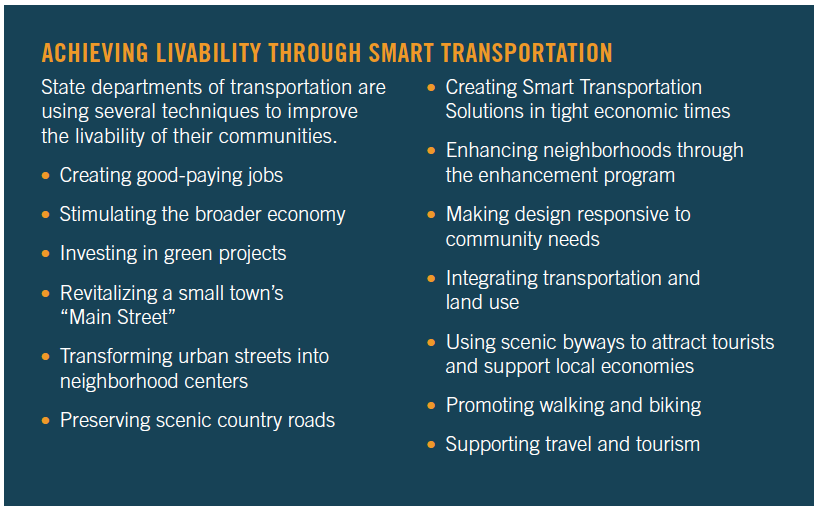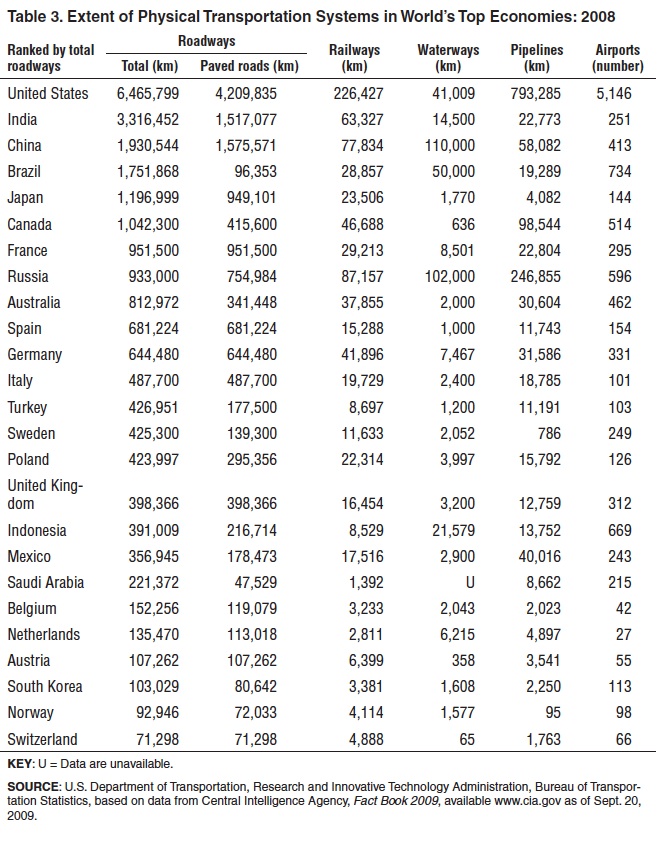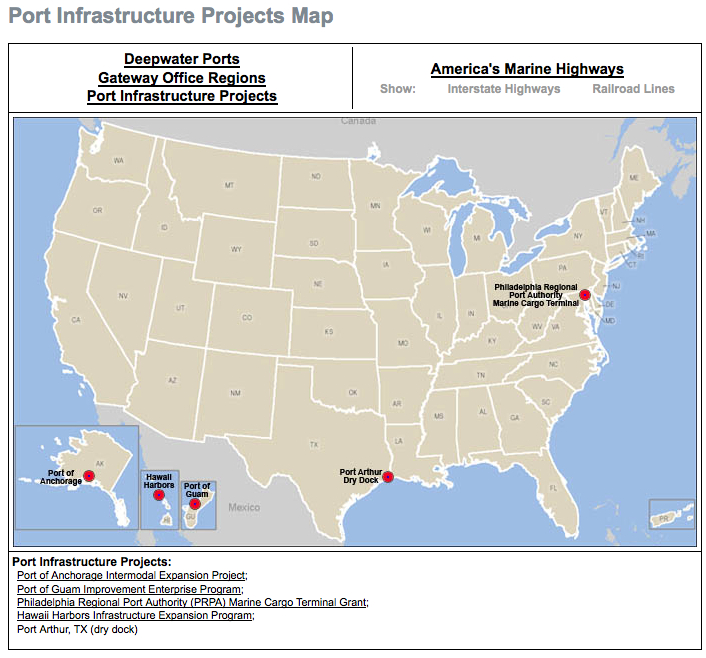…fiscal realities can do wonders to bring federal officials down to earth. The Transit Account of the Highway Trust Fund is barely solvent. The U.S. DOT budget will grow by only one percent in 2011. With commendable consistency and fairness, the Administration seems to have decided to apply the same investment standard to transit as it has preached and laid down for highways: Forget about massive capacity expansion; focus on getting the most out of the assets already in place by maintaining them in a state of good repair. To critics of the DOT’s new posture— and there will be some—a good answer could be: It’s just a different way of looking at what it means to be pro-transit.
View this complete post...Posts Tagged ‘Department of Transportation’
Rail Transit Expansion Reconsidered — Commentary
Monday, May 24th, 2010U.S. DOT’s Strategic Plan Creates Controversy With Its Emphasis on “Livability”
Tuesday, May 18th, 2010The Administration’s desire to impose its own vision of how Americans should live and travel represents a stubborn and in the end futile gesture. The gesture is futile for, as generations of political appointees before them have discovered, policies that do not resonate with the majority of Americans seldom survive after their authors have left office.
View this complete post...Transportation’s Role in Reducing U.S. Greenhouse Gas Emissions
Thursday, April 29th, 2010
U.S. DEPARTMENT OF TRANSPORTATION
Transportation GHG emissions account for 29 percent of total U.S. GHG emissions, and over 5 percent of global GHG emissions. Except otherwise noted, the estimates in this report account for “tailpipe” emissions from burning fossil fuels to power vehicles and do not account for greenhouse gases emitted
through other transportation lifecycle processes, such as the manufacture of vehicles, the extraction and refining of fuels, and the construction and maintenance of transportation infrastructure.
The Road To Livability: How State Departments of Transportation are Using Road Investments to Improve Community Livability
Wednesday, April 21st, 2010
AMERICAN ASSOCIATION OF STATE HIGHWAY AND TRANSPORTATION OFFICIALS
Soon, members of Congress will be asked to decide “What makes a ‘livable’ community?” Since the U.S. Department of Transportation is making livability a top priority for future transportation funding, this is an important concept to define. While some would suggest livability means a life without cars, this definition really doesn’t work for the millions of Americans who have chosen the lifestyle that an automobile affords…If enhancing livability is the objective of transportation legislation or regulation, then it must work for those who live in rural Montana just as much as it would for those in downtown Portland. Equating livability only to riding transit, walking and biking, limits its relevance and excludes a wide range of improvements and community needs.
Innovative Financing Is No Substitute for New Funding
Monday, April 19th, 2010Hoping to sustain interest in the Committee’s efforts to enact a new multi-year transportation bill during this session of Congress, Reps. James Oberstar (D-MN) and Peter DeFazio (D-OR), leaders of the House Transportation and Infrastructure Committee, convened a hearing on April 14 to explore innovative ways of financing highway and transit investments. But while the hearing provided a useful survey of available financing tools and programs, it produced no new answers to the key question that has bedeviled transportation advocates for many months and remains as the chief obstacle to moving the legislation forward— the question of how to pay for the proposed multi-year surface transportation program.
View this complete post...Freight Transportation: Global Highlights 2010
Monday, April 19th, 2010
RESEARCH AND INNOVATIVE TECHNOLOGY ADMINISTRATION
BUREAU OF TRANSPORTATION STATISTICS
To move large quantities of goods across the country and around the world, Americans depend on the Nation’s freight transportation system—a vast network of roads, bridges, rail tracks, airports, seaports, navigable waterways, pipelines, and equipment. Today, U.S. households can buy fresh fruits and vegetables in mid-winter, expect fast and reliable next-day deliveries of Internet purchases, and use electronic appliances manufactured thousands of miles away, often in other countries. Because economic activities worldwide have become more integrated and globalized, more goods produced by U.S. factories and farms are bound for export, and imports originate from more than 200 countries. This pace of trade Americans have become accustomed to is made possible by the complex intermodal transportation network that blankets the country and links the United States with world markets.
Port Infrastructure Projects: Interactive Map
Monday, April 12th, 2010
According to a U.S. DOT Report on freight traffic, the number of trucks on our highways will more than double by 2035. Inland waterways, or “marine highways,” could reduce congestion by taking on some of the freight burden.
To make the port-and-waterway system more familiar, the U.S. Maritime Administration offers an interactive map, with information on current maritime infrastructure projects around the U.S. The map also shows inland waterways, interstate highways, railroads, and port locations around the country.
View this complete post...Find the Companies Near You Receiving Highway Stimulus Money
Thursday, October 29th, 2009“Nearly 2,000 stimulus contractors have been awarded stimulus money for highway and bridge projects, U.S. Department of Transportation records show” reports ProPublica, the “independent, non-profit newsroom that produces investigative journalism in the public interest.” Check out the Stimulus Contractor Database they have created.
View this complete post...Follow InfrastructureUSA
CATEGORIES
- Accountability (219)
- Aging Infrastructure (758)
- Aviation (130)
- Biking (324)
- Bipartisan (271)
- Bridges (493)
- Broadband (57)
- Buses (160)
- Carbon Tax (22)
- Clean Air (182)
- Climate Change (202)
- Competitiveness (230)
- Congestion (327)
- Dams (77)
- Democrat (123)
- Drinking Water (192)
- Economic Stimulus (276)
- Employment (207)
- Energy (585)
- Environment (615)
- Equity (239)
- Funding (888)
- Global (205)
- Great American Infrastructure (33)
- Green (295)
- Guests on The Infra Blog (300)
- Hazardous Waste (27)
- High Speed Rail (224)
- Highway (785)
- Inland Waterways (204)
- Jobs (251)
- Land Use (99)
- LEED (28)
- Levees (42)
- Local (1,910)
- National (1,527)
- Policy (1,122)
- Pollution (215)
- Private Investment (213)
- Public Opinion (189)
- Public Parks & Recreation (198)
- Public Transportation (1,028)
- Racism (6)
- Rail (506)
- Recession (65)
- Recovery (218)
- Republican (109)
- Roads (1,120)
- Schools (81)
- Seaports (69)
- Smart Grid (98)
- Smart Growth (442)
- Solid Waste (26)
- Sustainability (767)
- Tax (112)
- Technology (397)
- Telecommunications (46)
- Transit (1,333)
- Urban Planning (983)
- Wastewater (183)
- Water Treatment (168)
Video, stills and tales. Share images of the Infra in your community that demands attention. Post your ideas about national Infra issues. Go ahead. Show Us Your Infra! Upload and instantly share your message.
Is the administration moving fast enough on Infra issues? Are Americans prepared to pay more taxes for repairs? Should job creation be the guiding determination? Vote now!
What do the experts think? This is where the nation's public policy organizations, trade associations and think tanks weigh in with analysis on Infra issues. Tell them what you think. Ask questions. Share a different view.
The Infra Blog offers cutting edge perspective on a broad spectrum of Infra topics. Frequent updates and provocative posts highlight hot button topics -- essential ingredients of a national Infra dialogue.
Dear Friends,
It is encouraging to finally see clear signs of federal action to support a comprehensive US infrastructure investment plan.
Now more than ever, our advocacy is needed to keep stakeholders informed and connected, and to hold politicians to their promises to finally fix our nation’s ailing infrastructure.
We have already engaged nearly 280,000 users, and hoping to add many more as interest continues to grow.
We require your support in order to rise to this occasion, to make the most of this opportunity. Please consider making a tax-deductible donation to InfrastructureUSA.org.
Steve Anderson
Managing Director
SteveAnderson@InfrastructureUSA.org
917-940-7125














 RSS Feed
RSS Feed